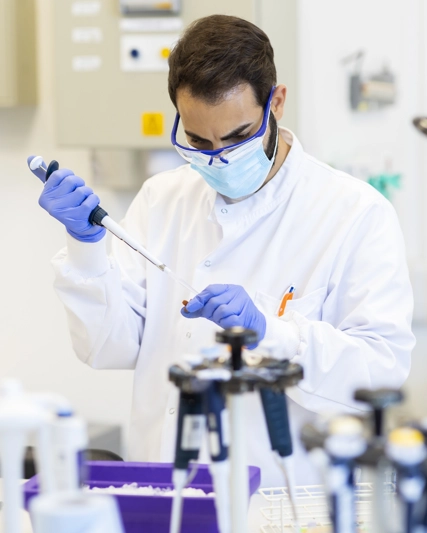Atmosphere
On this page we detail our atmosphere targets and how we aim to achieve them.

Our atmosphere targets
- 100% imported renewable electricity by 2025 and 100% renewable electricity (imported and generated) by 2030 (Scope 2)
- 80% absolute reduction in greenhouse gas emissions1 from a 2020 baseline, across all scopes2 and investment in nature-based solutions for the remaining 20% of our footprint by 2030
- Net zero greenhouse gas emissions across our full value chain by 2045: 90% absolute reduction in emissions from a 2020 baseline, across all scopes and all residual emissions neutralised.
1 Previously stated as net zero by 2030
2 This is a new longer-term target, aligned to the SBTi Net-Zero Standard definition of net zero
How we plan to achieve our atmosphere targets
Improving air quality
As a leader in medicines and vaccines for respiratory health, we want to play our part in improving air quality. We have done an initial assessment to establish an air pollution footprint in our operations and our supply chain. This showed that, directly, we are having a relatively low impact on air quality, and that the largest proportion of our emissions sit in our supply chain.
The outcome of the initial air quality assessment highlighted opportunities for reductions in emissions linked to on-site electricity generation and use of solid fuels, car use and move to electric fleet, as well as indicating opportunities in our value chain for the sourcing of plastic and glass products.
We are creating reduction plans around these key areas that are aligned to our pathway to zero and which aim to have a positive impact on air quality.
More about our action on climate to deliver the targets can be found in our pathway to net zero (PDF - 139KB).
Accelerating collective action on air pollution
We are members of the Alliance for Clean Air through the Clean Air Fund (CAF) and the World Economic Forum, which aims to drive corporate action on clean air to accelerate climate action and create healthy communities around the world.
The collective measurement of direct and value chain emissions across the Alliance for Clean Air membership aims to build a picture of the activities that give rise to poor air quality globally and intends to enable policy makers and industries to make informed decisions, considering the broader global impacts on health from poor air quality.


